Effects of 5,7-dihydroxytriptamine (5,7-DHT) on circadian locomotor activity of the blow fly, Calliphora vicina
- PMID: 15841230
- PMCID: PMC524654
- DOI: 10.1093/jis/3.1.14
Effects of 5,7-dihydroxytriptamine (5,7-DHT) on circadian locomotor activity of the blow fly, Calliphora vicina
Abstract
The biogenic amine serotonin (5-HT) is a neuromodulator in both vertebrates and invertebrates. It has been shown that serotonin, apart from its distinct effects on behavior, also plays a morphoregulatory role during the ontogeny of the insect's nervous system. The role of serotonin in modulating circadian locomotor activity of the blow fly, Calliphora vicina was explored. Injection of a specific neurotoxin, 5,7-dihydroxytryptamine (5,7-DHT), into the hemolymph appeared to significantly reduced the level of locomotor activity and lengthened the period (tau) of circadian rhythmicity. After drug injection in constant darkness flies continued with their free-running rhythm of a locomotor activity, depending on the time of 5,7-DHT injection. This compound causes phase delay when administered in the early subjective day, and phase advance in the late subjective day. This effect is the opposite of the phase response curve obtained for 5-HT injections. This suggests that 5-HT might act as an entraining agent via the output pathway by feedback to clock neurons in the brain. Some of the injected insects regained their normal level of activity after a few days. These findings suggest a potential role for serotonin as modulator of circadian rhythms in insect including regulation of the level of locomotor activity.
Figures
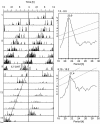
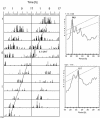
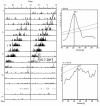
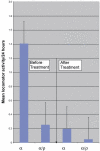
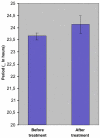

Similar articles
-
S-antigen antibody partially blocks entrainment and the effects of constant light on the circadian rhythm of locomotor activity in the adult blow fly, Calliphora vicina.J Biol Rhythms. 1996 Mar;11(1):68-74. doi: 10.1177/074873049601100107. J Biol Rhythms. 1996. PMID: 8695894
-
Destruction of the hamster serotonergic system by 5,7-DHT: effects on circadian rhythm phase, entrainment and response to triazolam.Brain Res. 1990 May 7;515(1-2):9-19. doi: 10.1016/0006-8993(90)90570-2. Brain Res. 1990. PMID: 2357582
-
Insect circadian rhythms and photoperiodism.Invert Neurosci. 1997 Sep-Dec;3(2-3):155-64. doi: 10.1007/BF02480370. Invert Neurosci. 1997. PMID: 9783440 Review.
-
Circadian regulation of Fos-like expression in the brain of the blow fly Calliphora vicina.Comp Biochem Physiol C Pharmacol Toxicol Endocrinol. 1996 Nov;115(3):239-46. doi: 10.1016/s0742-8413(96)00103-x. Comp Biochem Physiol C Pharmacol Toxicol Endocrinol. 1996. PMID: 9375362
-
Serotonin in Animal Cognition and Behavior.Int J Mol Sci. 2020 Feb 28;21(5):1649. doi: 10.3390/ijms21051649. Int J Mol Sci. 2020. PMID: 32121267 Free PMC article. Review.
Cited by
-
Effects of reserpine and p-chloroamphetamine on 5-HT metabolism and release in the cerebral ganglia of Inachis io (Lepidoptera).J Physiol Biochem. 2007 Jun;63(2):129-41. doi: 10.1007/BF03168224. J Physiol Biochem. 2007. PMID: 17933387
-
Common Ground between Biological Rhythms and Forensics.Biology (Basel). 2022 Jul 18;11(7):1071. doi: 10.3390/biology11071071. Biology (Basel). 2022. PMID: 36101448 Free PMC article. Review.
References
-
- Ali D. The aminergic and peptidergic innervation of insect salivary glands. Journal of Experimental Biology. 1997;200:1941–1949. - PubMed
-
- Birthelmer A, Schweizer T, Jeltsch H, Jackisch R, Cassel J-CH. 5,7-dihydroxtryptamine lesions enhance and serotoninergic grafts normalize the evoked overflow of acetyclcholine in rat hippocampal slices. European Journal of Neuroscience. 2002;16:1839–1849. - PubMed
-
- Cymborowski B. The assumed participation of 5-hydroxytiptamine in regulation of the circadian rhythm of locomotor activity in Acheta domesticus. Comparative and General Pharmacology. 1970;1:316–322. - PubMed
-
- Cymborowski B. Serotonin modulates a photic response in circadian locomotor rhythmicity of adults of the blow fly, Calliphora vicina. Physiological Entomology. 1998;23:25–32.
-
- Cymborowski B, Gillanders SW, Hong S-F, Saunders DS. Phase shifts of the adult locomotor activity rhythm in Calliphora vicina induced by non-steroidal ecdysteroid agonist RH-5849. Journal of Comparative Physiology. A. 1993;172:101–108.
Publication types
MeSH terms
Substances
LinkOut - more resources
Full Text Sources

